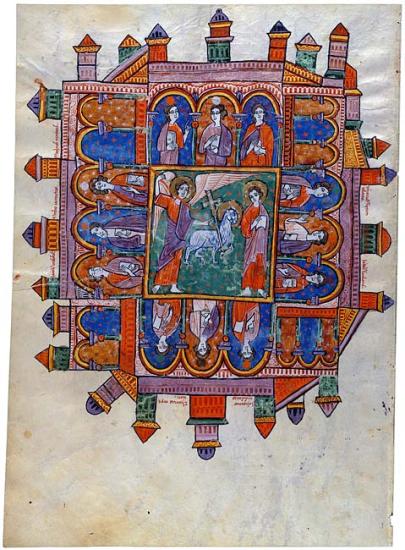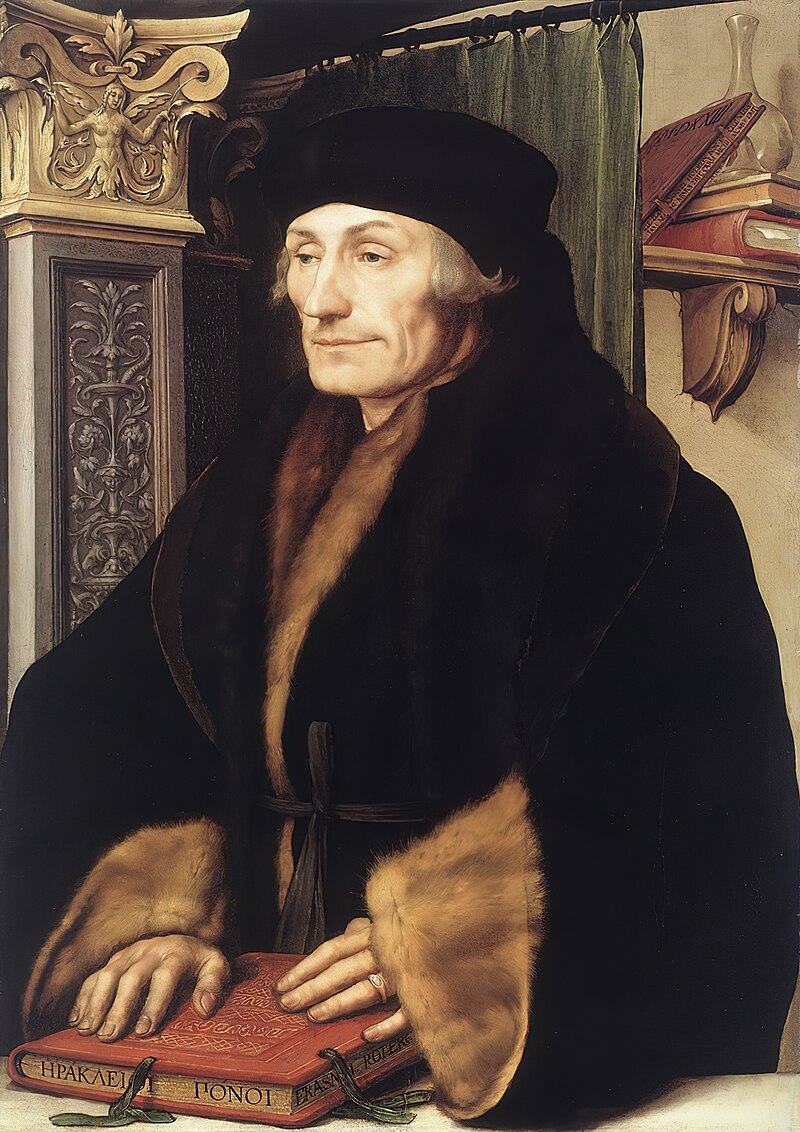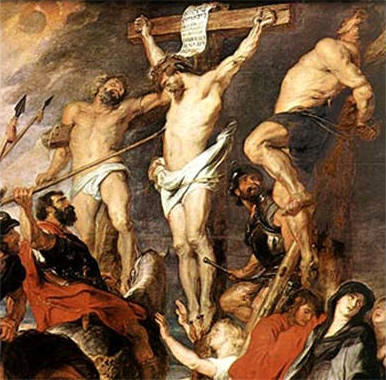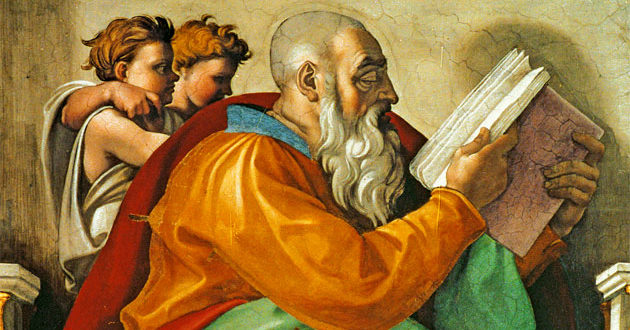
FOREWORD: I started this series of five blogs on March 14, in response to a question from my students:
Specifically, is this the end of days? I have heard a number of students joke and comment about this, and I think the jokes and comments about the apocalypse do indicate a small underlying fear. Among the wildfires in Australia, the tornados in the south, the locusts in Eastern Africa currently, and now this virus … I can definitely see where they are coming from!
Back then, Pittsburgh Theological Seminary, where I teach, had already made the decision to cancel in-person classes, and to close the campus. Soon thereafter, Pennsylvania’s governor issued an order for citizens to shelter in place.
Now, Governor Wolf has suggested that May 8 may be the date for us to begin re-opening, slowly, carefully, and by stages. Nationally, it appears that we may have crested the wave of this pandemic, and that social distancing and other preventive measures may have done their work. Constant testing and vigilance, and a willingness to return to lock-down if needed, are going to remain necessary until an effective treatment for COVID-19, and ultimately a vaccine for the novel coronavirus, are available. Still, we can be cautiously optimistic. Praise the Lord!
I hope that this series has been useful to all who may have been asking if this pandemic was a sign of the end-times. I also hope it has been a help to any who were interested in, and willing to listen to, what the Bible says about the end of the world, and the ends–that is, the purpose and plan–of God.
In Revelation 20:7-10, John describes history’s final battle in a vision drawing particularly on the Old Testament book of Ezekiel. As in Ezekiel 38—39, the names Gog and Magog represent the final enemies of God’s people. But in Ezekiel, Gog of Magog is the leader of an alliance of kingdoms (Ezek 38:1-6), while in Revelation 20, Gog and Magog symbolize “the nations that are at the four corners of the earth” (Rev. 20:8). In Ezekiel, the LORD brings Gog against Jerusalem (Ezek 38:4); but in Revelation, Satan deceives the nations into rebellion against God and all God’s people (Rev 20:8). In both Ezekiel and Revelation, Gog’s attack comes as a shock: the battle with Gog comes after Israel’s restoration and renewal (Ezek 38:8), while in Revelation, Gog and Magog emerge after a thousand years of Christ’s rule on earth (Rev 20:1-7). As Jim Durlesser writes, “The message of the Gog oracle is that sin, oppression, and the brutality of war are not vanquished without significant effort, and that we ought not become lax or over-confident” (“A Study of Apocalyptic Literature in the Old Testament,” in Approaching the New Millennium: Student Book, ed. Eleanor A. Moore [Nashville: United Methodist Publishing House, 1995], 34). In the end, as both Ezekiel and Revelation affirm, victory belongs to God alone (Ezek 38:18-23; Rev 20:9).
The defeat of Gog, Magog, and Satan culminates in the final judgment, after which the condemned are cast into the lake of fire (Rev 20:11-15). With the universe now purged of evil, Death and Hades are themselves thrown into the lake of fire (Rev 20:14; the CEB has “the Grave” here for the Greek Hades, which the Septuagint uses to translate the Hebrew Sheol: the underworld, or the place of the dead). Now that Death itself has died (see also Isa 25:7–8; Dan 12:1–3), the world to come is ushered in: “Then I saw a new heaven and a new earth, for the former heaven and the former earth had passed away, and the sea [an ancient image of chaos] was no more” (Rev 21:1). Here again John, who was steeped in the language and imagery of Scripture, is drawing upon an Old Testament text: this time, alluding to Isaiah 65:17-18:
Look! I’m creating a new heaven and a new earth:
past events won’t be remembered;
they won’t come to mind.
Be glad and rejoice forever
in what I’m creating,
because I’m creating Jerusalem as a joy
and her people as a source of gladness.

In John’s vision, the New Jerusalem is a massive golden cube, 1,500 miles long, wide, and high (Rev 21:16)! I agree with Craig Koester (Revelation, AB 38A [New Haven: Yale, 2014], 816) and Mathias Rissi (The Future of the World: An Exegetical Study of Revelation 19.11-22.15, Studies in Biblical Theology, Second Series 23 [Napierville, IL: Allenson, 1972], 62-63) that the most likely parallel for this image is the inner room of the temple, called the Most Holy Place. This chamber, where the Ark of the LORD was kept, was a perfect cube, and its walls were lined with gold (1 Kgs 6:20; Ezek 41:4). The point is that the entire city is the holy dwelling place of God, where all God’s people are invited to live.
As in Ezekiel’s vision of the ideal city, John’s new Jerusalem has twelve gates, named with the names of the twelve tribes of Israel (see Ezek 48:30-35). However, these gates are never shut (Rev 21:25)–which, since the whole reason for fortified city gates was to keep people out, subverts their purpose entirely! The light of God’s glory streams its invitation out of the city into the world outside, and John says, “The nations will walk by its light, and the kings of the earth will bring their glory into it. . . . People will bring into it the glory and the honor of the nations” (Rev 21:24-26, emphasis mine). After seeming to be destroyed forever, the nations are unexpectedly included in the world to come.
Mathias Rissi (The Future of the World, 77-78; see also Koester, Revelation, 822) underlines how surprising this message of inclusion is:
Throughout the book [the kings of the earth] are a clearly defined entity, a collective expression for the holders of world-wide political power who place themselves at the disposal of the Antichrist (17.2, 18). In the end, they hurl their entire massed power against God and his church (16.14; 19.9); but then, under the effect of Christ’s word, they will collapse and die together with their armies (19.19-21). Having been destroyed, they belong now to the ‘dead’, of whom 20.15 speaks. According to God’s judgment they will fall prey to the ‘second death’.
The kings of the earth are destroyed in Revelation’s final judgment. Yet somehow, here they are, coming through the open gates into God’s holy city! Perhaps after all the lake of fire is not the end. Rissi (The Future of the World, 78) suggests that just as there is a “second death” in John’s visions (Rev 20:14; 21:8), there must be a “second resurrection”:
In 20.6 John calls the resurrection of the church of Jesus ‘the first resurrection’, and he praises all who will have part in it, for whoever is not caught up in it must await the awful reality of judgment in the lake of fire, and can achieve life only through the judgment. This redemption event which finally abolishes the reality of judgment must be a second resurrection which is presupposed by the mention of a first. For the second resurrection—in analogy to the first and second death, both of which signify judgment—can only be a saving reality.
Coming again to Revelation 21:24-26 not long ago in my studies, I was puzzled that I hadn’t seen this before, when as a young Christian I used to pore over these passages, looking for signs of the end. Perhaps it was because, as a young Fundamentalist, I saw what I knew the text said, and not what was actually there on the page. Then again, it may be that I didn’t see it because my Bible didn’t say it! Intriguingly, Rev 21:24 in the old King James Version reads “And the nations of them which are saved shall walk in the light of it” (emphasis mine).

This translation is based, not on the best Greek text of Revelation, but on Erasmus’ Textus receptus, which adds ton sozomenon (“the ones who are saved”) following ta ethne (“the nations”) in Rev 21:24. While the reason for adding this phrase is clear, its origin is mysterious: neither the Vulgate nor the majority Byzantine Greek text have this addition, and the critical Nestle-Aland text, Novum Testamentum Graece, does not even list it as a minor variant to be considered.
The seeming contradiction in Revelation regarding the fate of the nations, which evidently prompted Erasmus to add an explanatory note to his Greek text, is not a feature of Revelation alone. Indeed, it seems likely that, as with so many images and themes in this book, John was inspired by a passage from the Old Testament: specifically, by Zechariah 14.
Themes and images used in later apocalypses appear throughout the book of Zechariah: for example, the angelic interpreter in Zech 1:9, 19; 2:3-5; 4:10-14; 5:3, 6-8, 10-11; 6:5-6; compare Dan 7:15-16; 8:15-17; Rev 1:1-2; the four horsemen in Zech 1:7-17; 6:1-8; compare Rev 6:1-8; and the horns in Zech 1:18-21 (2:1-4 in Hebrew); compare Dan 7:24; Rev 17:9–11. However, Zechariah 14 is a full-blown apocalypse which starkly describes the final battle between the nations and Jerusalem (compare Dan 11:40—12:1; Ezek 38—39; Rev 20:7-10). As in Ezekiel, it is the LORD who gathers “all the nations against Jerusalem in battle” (Zech 14:2; compare Zech 12:2; Ezek 38:8; Rev 20:8). But at the moment when all seems lost, the LORD intervenes: “The LORD will go out and fight against those nations as when he fights on a day of battle” (Zech 14:3; compare Dan 12:1; Rev 20:9). God the Divine Warrior stands astride the Mount of Olives, which splits in two (Zech 14:4-5; compare Nah 1:5; Hab 3:10), forming a new valley, through which Jerusalem’s population escapes. Once the people are safe, “The LORD my God will come, and all the holy ones with him” (Zech 14:5).
Jerusalem’s security is guaranteed by a death blow to the nations: God sends a plague (!) that rots the flesh of “all the peoples who swarmed against Jerusalem” (Zech 14:12). Panic-stricken, Jerusalem’s enemies will turn on one another (Zech 14:13; compare 2 Chr 20:23-24; Ezek 38:21). So the LORD and the LORD’s people are victorious, and their enemies come to a particularly messy end.

Yet despite the sweeping devastation of plague and war, the enemies of Jerusalem are not after all utterly destroyed: “All those left from all the nations who attacked Jerusalem will go up annually to pay homage to the king, the LORD of heavenly forces, and to celebrate the Festival of Booths” (14:16). The nations come to Jerusalem year after year, to worship the LORD and to celebrate Sukkot! This autumn pilgrim feast is an appropriate time for the nations to come to Jerusalem, as it is also the time set for the reading and veneration of Torah (Deut 31:10-11; Neh 8:13-18). The nations, Zechariah says, join the faithful of Israel in proclaiming fealty to the LORD, and faithfulness to the LORD’s commandments.
Meanwhile, temple holiness has been extended to include all Jerusalem, and even beyond. Every cooking pot in Judah and Jerusalem is fit “to boil the flesh of the sacrifice” (Zech 14:21, NRSV; compare Lev 6:24-30; 22:1-7, 10-16), and even the harness bells of horses in Jerusalem are engraved, “Holy to the Lord” (Zech 14:20)! This democratization of holiness is reminiscent of the Holiness Code (Lev 17—26), but while that tradition sought to make all Israel holy through a heightened sense of purity and impurity extended to each Israelite (“Say to the whole community of the Israelites: You must be holy, because I, the LORD your God, am holy,” Lev 19:2), here that sanctity is granted by a sovereign declaration of God.
The conclusion of Zechariah 14 seems to back away from this astonishing extension of holiness and inclusion of the nations, as it calls for the expulsion of the Canaanites (Hebrew kena’ani) from “the house of the LORD of heavenly forces” (Zech 14:21). Since Zechariah 14 has already both extended temple holiness to the entire city (Zech 14:20-21), and expressly stipulated the presence of foreigners in the city, at least on Sukkot (Zech 14:16-19), the exclusion of the Canaanites seems odd. With the CEB, we should understand kena’ani here to mean “merchants,” as in Zephaniah 1:11 (compare Hos 12:7[8]; Prov 31:24; Job 41:6; as well as kin’an, meaning “traders,” in Isa 23:8). Crass commercialism and profiteering are opposed here, not the inclusion of the nations.
:max_bytes(150000):strip_icc():format(webp)/14983101064_9ca42eb6fe_k-5c3ea9dac9e77c0001778308.jpg) Similarly, in the New Testament, all four gospels (Matt 21:12-16; Mark 11:15-17; Luke 19:45-46; John 2:13-17) describe Jesus driving the merchants from the temple. In Mark 11:17, however, this act is paired with radical inclusion:
Similarly, in the New Testament, all four gospels (Matt 21:12-16; Mark 11:15-17; Luke 19:45-46; John 2:13-17) describe Jesus driving the merchants from the temple. In Mark 11:17, however, this act is paired with radical inclusion:
He taught them, “Hasn’t it been written, My house will be called a house of prayer for all nations? [all the Gospels cite Isa 56:7 here, but the phrase “for all nations” does not appear in the other accounts] But you’ve turned it into a hideout for crooks” [citing Jer 7:11].
Zechariah 14 and Revelation 20–21 share the overall pattern we expect to find in apocalypses: the final battle; the timely intervention of the LORD; the defeat of the LORD’s enemies and the final deliverance of the LORD’s people. But they also share this astonishing element: the full inclusion of the nations. We should observe that neither text sets forth a universalism shorn of judgment, destruction, and exclusion. God’s justice, after all, requires that the final victory must mean the vindication of God’s people, and the end of their enemies. The gates of the new Jerusalem may be open in invitation, but “Nothing unclean will ever enter it, nor anyone who does what is vile and deceitful, but only those who are registered in the Lamb’s scroll of life” (Rev 21:27). Entry into the city is not unconditional, but presupposes the transformation of any who enter.
Yet, God’s grace and mercy require that God’s final victory must also mean the inclusion even of those thought excluded. The mention of the “Lamb’s scroll of life” calls back to mind the final judgment scene in Rev 20:12:
I saw the dead, the great and the small, standing before the throne, and scrolls were opened. Another scroll was opened too; this is the scroll of life. And the dead were judged on the basis of what was written in the scrolls about what they had done.
While the “scrolls” are a record of the life lived, the “scroll of life” is something else: “In it,” Brian Blount (Revelation: A Commentary, NTL [Louisville, Westminster John Knox, 2009], 374) writes, “names are graciously written—by God (divine passive)—from the beginning of creation.” Blount continues,
By joining these two books—one representing grace, the other representing works—in the same verse, John holds in positive tension these two theological concepts. He recognizes the freedom God gives to each human to make choices, and he weighs the responsibility those choices bear, but he never allows the ultimate eschatological decision to rest with anyone other than God.
We may–indeed we must–affirm the reality of human freedom and responsibility. Yet God remains God, after all, and reserves to Godself the final disposition of all things. So Mathias Rissi affirms, “But the victory of grace will in the end be stronger than all the resistance of the unbelief of Israel, and of the nations and kings of the earth!” (The Future of the World, 79). Apocalypse, remember, is a hopeful literature! As we stated in the first blog in this series, “We need not worry about the future, friends, not because we know what the future holds, but because we know who holds the future.”








 All four Gospels connect Jesus’ last week on earth with Passover. But while in Matthew, Mark, and Luke, Jesus’ last supper with his followers is a Passover meal (
All four Gospels connect Jesus’ last week on earth with Passover. But while in Matthew, Mark, and Luke, Jesus’ last supper with his followers is a Passover meal ( From early on, Christian readers found in
From early on, Christian readers found in 



